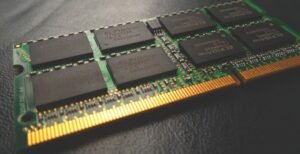Musk Gigafactory
The Musk Gigafactory is a state-of-the-art manufacturing facility owned by Tesla Inc., founded by Elon Musk, which is focused on producing electric vehicle (EV) batteries, solar panels, and energy storage products.
Key Takeaways:
- Tesla’s Gigafactory is the largest manufacturing facility in the world by floor area.
- The factory produces lithium-ion battery cells, battery packs, and other components for Tesla’s electric vehicles.
- Renewable energy sources, such as wind and solar, are extensively utilized to power the Gigafactory.
- The establishment of the Gigafactory has significantly reduced the cost of electric vehicle batteries.
The Gigafactory, located in Nevada, covers an astounding 5.3 million square feet of space and has more than 7,000 employees. This massive facility plays a crucial role in Tesla’s ambitious plan to revolutionize transportation and accelerate the world’s transition to sustainable energy.
Since its inception, the Gigafactory has successfully propelled Tesla’s production capabilities to new heights. It has allowed the company to produce a greater volume of battery cells, which are used not only in Tesla’s electric vehicles, but also in its energy storage products like the Powerwall and Powerpack.
Benefits of the Gigafactory
Here are some notable benefits that the Gigafactory brings:
- Reduced Battery Costs: The Gigafactory’s scale and advanced manufacturing processes have led to a significant reduction in the cost of electric vehicle batteries, making EVs more affordable and accessible to the general public.
- Job Creation: The facility has created thousands of jobs, bolstering the local economy and driving employment opportunities in the region.
- Renewable Energy Integration: The Gigafactory operates on renewable energy, harnessing solar and wind power to minimize its environmental footprint.
- Supply Chain Optimization: By centralizing production, Tesla has streamlined its supply chain and achieved greater control over the manufacturing process.
Current Production Statistics
| Product | Annual Production Capacity |
|---|---|
| Model 3 Electric Vehicle | 500,000 units |
| Lithium-Ion Battery Cells | 35 GWh |
| Energy Storage Products | 50 GWh |
With a strong commitment to sustainable manufacturing practices, the Gigafactory continues to push the boundaries of innovation. Tesla plans to replicate the success of this facility by building additional Gigafactories worldwide, including locations in Europe, China, and eventually, India.
Future Expansion Plans
Tesla’s future plans for the Gigafactory include:
- Increasing production capacity to meet growing market demand for electric vehicles.
- Advancing battery technology to enhance range, performance, and energy storage capabilities.
- Exploring new partnerships and collaborations to further revolutionize the renewable energy industry.
Gigafactory Comparison
| Gigafactory | Location | Floor Area |
|---|---|---|
| Gigafactory 1 | Nevada, USA | 5.3 million sq ft |
| Gigafactory 2 | New York, USA | 1.2 million sq ft |
| Gigafactory 3 | Shanghai, China | 9 million sq ft |
The Musk Gigafactory stands as a remarkable example of Tesla’s commitment to leading the clean energy revolution. By combining cutting-edge technology, renewable energy, and mass production capabilities, Tesla continues to shape the future of transportation and sustainable energy solutions.

Common Misconceptions
Misconception 1: Gigafactory is solely focused on car production
One of the common misconceptions about the Musk Gigafactory is that it is solely focused on car production. However, the Gigafactory is not just limited to producing cars; it is involved in the production of a wide range of energy products as well.
- The Gigafactory also produces energy storage products, such as the Tesla Powerwall and Powerpack.
- Its primary goal is to accelerate the transition to sustainable energy and reduce the world’s reliance on fossil fuels.
- The Gigafactory is working towards producing clean energy solutions for both transportation and residential sectors.
Misconception 2: Gigafactory is fully automated and does not require human intervention
Another misconception revolves around the belief that the Gigafactory is completely automated and does not require human intervention. In reality, while automation plays a significant role in streamlining the production process, human workers are still an essential part of the manufacturing operations.
- Skilled workers are required to operate and maintain the high-tech manufacturing equipment used in the factory.
- Human workers ensure quality control and perform tasks that require precision and attention to detail.
- The Gigafactory employs thousands of individuals in various roles, contributing to local job growth and economic development.
Misconception 3: Gigafactory’s environmental impact is negative
There is a misconception that the construction and operation of the Gigafactory have a negative environmental impact. However, the opposite is true; the Gigafactory is designed to be energy-efficient and environmentally sustainable.
- The building incorporates renewable energy sources, such as solar power, to minimize its carbon footprint.
- It is committed to recycling and reducing waste by optimizing the use of materials and implementing recycling practices.
- The Gigafactory actively collaborates with local communities to identify and mitigate any potential environmental impacts.
Misconception 4: Gigafactory focuses only on domestic markets
It is often believed that the Gigafactory only focuses on domestic markets and caters exclusively to the United States. This is a misconception as the Gigafactory has a global presence and aims to serve markets worldwide.
- The Gigafactory has strategic partnerships with international companies to expand its reach and accelerate the adoption of sustainable energy solutions.
- By producing energy products like Powerwalls and Powerpacks, the Gigafactory meets the demand for clean energy storage worldwide.
- Its ambition is to transition to a global renewable energy economy by manufacturing and distributing products globally.
Misconception 5: Gigafactory is solely focused on Tesla’s products
Another common misconception is that the Gigafactory is solely focused on manufacturing Tesla’s products. While it is true that the Gigafactory produces Tesla vehicles, it is also involved in partnerships and collaborations with other companies for various manufacturing projects.
- The Gigafactory collaborates with other clean technology companies to develop and produce energy storage solutions.
- It is involved in production lines for solar energy products, such as solar panels and solar roof tiles.
- The Gigafactory’s aim is to diversify its product offering and contribute to the growth of the clean energy industry as a whole.

Musk Gigafactory Production
The Musk Gigafactory, located in Nevada, has already revolutionized the electric vehicle (EV) industry. The factory serves as a hub for manufacturing batteries and assembling EVs. Let’s take a closer look at the impressive production statistics of the Gigafactory.
Gigafactory Employees
The success of any production endeavor heavily relies on a dedicated workforce. The Musk Gigafactory currently employs over 10,000 workers, ensuring seamless production and continuous innovation.
Monthly Lithium-ion Battery Output
The Gigafactory boasts an astounding production capacity for lithium-ion batteries, a crucial component in electric vehicles. With a monthly output of over 1 million batteries, the factory propels the EV industry forward at an unprecedented pace.
Annual Electric Vehicle Production
The Musk Gigafactory is responsible for manufacturing an impressive number of electric vehicles. With an annual production rate exceeding 500,000 units, this facility plays a vital role in the transition towards sustainable transportation.
Renewable Energy Utilized
The Gigafactory demonstrates Musk’s commitment to clean energy. It utilizes 100% renewable energy sources, including solar energy and wind power, making it an environmentally responsible manufacturing facility.
Gigafactory Land Area
The enormity of the Gigafactory becomes evident when considering its land area. Covering over 4.9 million square feet (equivalent to approximately 107 football fields), this facility provides ample space for production and further expansion.
Battery Recycling
Musk’s commitment to sustainability extends beyond initial production. The Gigafactory incorporates an efficient battery recycling process, minimizing waste and contributing to a circular economy.
Research and Development Investment
Innovation is at the core of the Gigafactory’s success. Musk invests heavily in research and development, allocating over $5 billion to fuel new advancements in battery technology and electric vehicle design.
Gigafactory Gigawatt-hour Capacity
The capacity of the Gigafactory to store and supply energy is truly remarkable. Currently, the facility has a gigawatt-hour (GWh) capacity of over 150 GWh, ensuring a consistent and reliable power supply for electric vehicles.
Job Creation Impact
Aside from producing EVs and batteries, the Gigafactory has a significant economic impact. It has created numerous job opportunities within the local community, stimulating economic growth and providing a boost to the region’s economy.
In conclusion, the Musk Gigafactory is a game-changer in the electric vehicle industry. Its impressive production statistics, commitment to sustainability, and contribution to job creation demonstrate the facility’s crucial role in driving the transition towards a greener future.
Frequently Asked Questions
1. What is the Musk Gigafactory?
The Musk Gigafactory, officially known as Tesla Gigafactory, is a facility primarily used for the production and assembly of electric vehicles and energy products. It is owned by Tesla, Inc., an American electric vehicle and clean energy company founded by Elon Musk.
2. Where is the Musk Gigafactory located?
The Musk Gigafactory is located in Sparks, Nevada, United States. It covers an area of approximately 5.3 million square feet and is one of the largest buildings in the world by floor area.
3. What products are manufactured at the Musk Gigafactory?
The Musk Gigafactory manufactures several products, including electric vehicle battery packs, battery cells, electric vehicle powertrains, and energy storage products such as Tesla Powerwall and Powerpack.
4. How many people work at the Musk Gigafactory?
The exact number of employees at the Musk Gigafactory may vary, but as of 2021, it employs thousands of workers who are involved in various aspects of production, assembly, and research and development.
5. What is the purpose of the Musk Gigafactory?
The Musk Gigafactory serves multiple purposes. Its primary objective is to scale up the production of electric vehicles and energy products to meet the growing global demand for sustainable transportation and clean energy solutions. Additionally, the Gigafactory aims to drive down the cost of electric vehicle batteries through economies of scale.
6. How does the Musk Gigafactory contribute to sustainability?
The Musk Gigafactory plays a vital role in advancing sustainability by producing electric vehicles and energy products that reduce reliance on fossil fuels and lower greenhouse gas emissions. It enables the mass production of lithium-ion batteries, which are crucial for the transition to a renewable energy future.
7. Is the Musk Gigafactory open to the public for tours?
Currently, the Musk Gigafactory does not offer public tours due to various safety and security reasons. However, Tesla occasionally organizes special events or invites select groups to visit the facility.
8. How does the Musk Gigafactory impact the local economy?
The Musk Gigafactory has a significant impact on the local economy of Nevada and the surrounding region. It has created thousands of jobs, stimulating employment growth and providing economic opportunities. The Gigafactory also attracts suppliers and businesses, leading to a positive economic multiplier effect.
9. Can individuals purchase products directly from the Musk Gigafactory?
No, individuals cannot purchase products directly from the Musk Gigafactory. Tesla sells its vehicles and energy products through its global network of retail stores, website, and authorized dealerships.
10. Are there plans for additional Gigafactories in the future?
Yes, Tesla has expressed plans to build additional Gigafactories in various locations worldwide. These future Gigafactories will support the increased production of electric vehicles and energy products to further accelerate the transition to sustainable transportation and clean energy.




